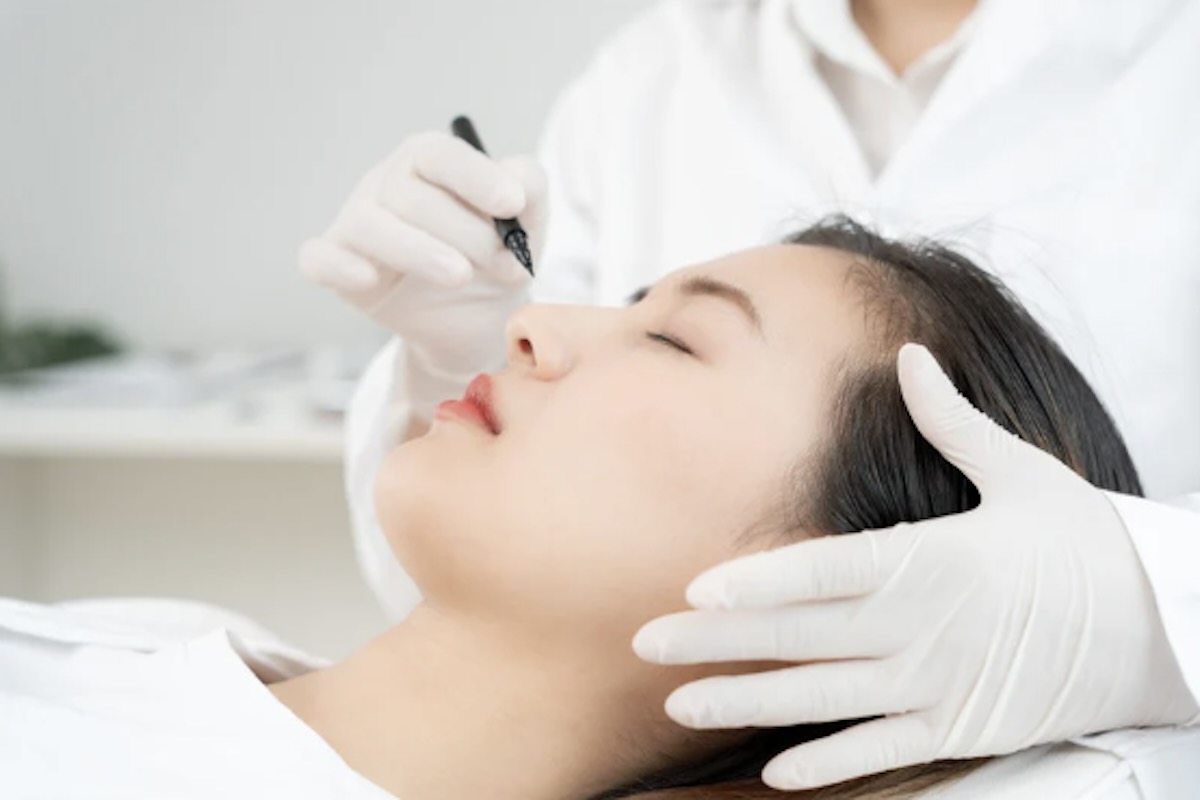Japan’s aesthetic medicine market has grown rapidly in recent years, reaching a market size of 594 billion yen in 2023. This article provides a systematic overview of the historical development of aesthetic medicine in Japan, the country’s unique sense of beauty, the current state of the industry, and future prospects. In particular, it explains the Japanese cultural value placed on “natural beauty” and the evolving attitudes toward cosmetic surgery.

The Historical Development of Aesthetic Medicine in Japan
Aesthetic medicine in Japan has evolved uniquely, influenced by European medicine in the early 20th century. After World War II, the advancement of plastic surgery led to the gradual recognition of aesthetic surgery as a medical field. In the 1970s, aesthetic surgery was officially recognized as a medical specialty, establishing its social status within healthcare.
Here is a chronological overview of its history:
■ 1920s–1940s: The Dawn of Plastic Surgery
After World War I, reconstructive surgical techniques from Europe were introduced to Japan as part of war injury treatment. Procedures such as skin grafts and facial reconstruction formed the foundation, but at the time, these were considered “treatments” rather than “cosmetic” procedures. In 1948, Japan’s first cosmetic surgery was performed at a hospital in Tokyo, offering procedures like rhinoplasty and double eyelid surgery (Japan Society of Aesthetic Surgery, 2024).
■ 1970s–1990s: Technological Innovation and Social Acceptance
In the 1970s, laser treatments were introduced, making it possible to remove blemishes and birthmarks. In the 1980s, silicone breast augmentation became widespread, but due to immature technology, complications were frequent. In response, the Ministry of Health, Labour and Welfare established “Quality Standards for Aesthetic Medical Devices” in 1995, strengthening safety regulations (Ministry of Health White Paper, 2024).
■ 2000s Onward: The Rise of Minimally Invasive Procedures
Aesthetic medicine entered a period of major transformation. The introduction of cutting-edge devices such as lasers, radiofrequency, and HIFU (high-intensity focused ultrasound) led to a rapid increase in non-surgical procedures. As a result, treatments like Botox injections and hyaluronic acid fillers became mainstream, with their short downtime making them popular as “easy-to-undergo procedures.” The spread of information via social media and the internet, the expansion of online consultations, and the popularity of doctor-recommended skincare products have also driven market growth. In terms of safety, the 2014 revision of the Pharmaceutical and Medical Device Act aligned manufacturing standards with international norms (ISO 13485) and made adverse event reporting mandatory (PMDA, 2024). This has helped Japan’s aesthetic medicine earn a reputation for being “safe and high-quality.”
■ 2020s: Increase in Aesthetic Medicine Patients
Although the market temporarily shrank due to the impact of COVID-19, it has since rebounded, driven by increased demand for eye-area procedures during mask-wearing and the use of at-home periods for cosmetic treatments. By 2023, the number of cosmetic surgery clinics had risen to 2,016, a 43.6% increase from 2020, showing a rapid growth in new clinics.
Traditional Japanese Aesthetics and Cultural Values
Japanese beauty ideals are deeply rooted in the cultural value of “natural beauty.” Traditionally, “fair and translucent skin” and a “small face” have been considered ideals. This preference for fair skin dates back to the Heian period, where it symbolized nobility, and is still reflected today in the popularity of sun protection and whitening cosmetics.
Other key features include a preference for “subtle changes” such as a smaller face, facial symmetry, and improved skin quality. Rather than dramatic changes, it is considered virtuous to enhance one’s natural beauty. In Japanese society, which values group harmony, conspicuous changes or excessive cosmetic surgery are seen as “disturbing the harmony,” so subtle corrections that do not stand out are considered ideal.
There is also a strong sense that surgical procedures represent “altering the natural body,” which can be seen as a form of self-denial. Significantly changing the body inherited from one’s parents is often viewed as “unfilial” or “unnatural,” leading to moral and emotional resistance.
Recent Changes in Beauty Ideals
Recently, under the influence of social media and global beauty standards, resistance to aesthetic medicine has declined, especially among younger generations. For those in their teens and twenties, reasons such as “it’s easy to do,” “the price has become affordable,” and “people around me are also using it” have made aesthetic medicine a common choice. The spread of non-surgical procedures and treatments that show results in a short period has also contributed to this decline in resistance.
The Current State of Aesthetic Medicine in Japan
Japan’s aesthetic medicine market reached 594 billion yen in 2023, showing 108.8% growth compared to the previous year. Since 2020, the number of clinics has surged, with 2,016 cosmetic surgery clinics and 2,491 plastic surgery clinics as of 2023. This growth is driven by increased demand for eye-area procedures due to mask-wearing and the use of remote work periods for cosmetic treatments.
Non-surgical procedures – such as lasers, injections, and skincare – are the mainstay, favored for their minimal downtime and risk. Facial procedures account for 90% of all treatments, with double eyelid surgery, skin improvement, and facial contouring being especially popular. This reflects the Japanese preference for “subtle changes” and “natural beauty.”
While most users are women, the number of male patients is also increasing, with beard removal and skin treatments gaining popularity. Demand is also expanding among not only younger people but also middle-aged and older adults seeking anti-aging care.
Recent trends include the introduction of online consultations, the expansion of doctor-recommended skincare products, the use of social media marketing, the emergence of new procedures, and the growing popularity of Korean-origin treatments and materials.
Changing Attitudes Toward Surgical Procedures
For a long time, there was strong moral and emotional resistance in Japanese society to surgical cosmetic procedures, which were seen as “unnatural,” “unfilial,” or “self-denial.” However, this resistance has recently decreased, especially among younger generations.

Reasons for this change include:
- Improvements in Safety and Convenience
The spread of non-surgical treatments and procedures that are quick and low-risk has lowered psychological barriers. - Lower Costs and Greater Accessibility
As treatment costs have fallen and more quick procedures have become available, the economic and time burdens have decreased. - Greater Openness and the Influence of Social Media
Cosmetic medicine is now commonly featured on social media, TV shows, and magazines, making it more familiar and visible as something that people around you also use, which has reduced social resistance. - Recognition as a Means of Self-Expression and Self-Realization
Cosmetic medicine is increasingly seen not as “self-denial” but as a form of self-expression and self-fulfillment. - Wider Social Acceptance of Subtle Changes
As long as the changes are subtle and not conspicuous, society is becoming more accepting.
Future Outlook
Japan’s aesthetic medicine market is expected to continue growing. Factors supporting this growth include more clinics entering the field, an expanding target demographic, increasing demand among men and older adults, and a greater willingness to undergo surgical procedures.
Technological advances such as AI, regenerative medicine, and personalized treatments are also anticipated, making procedures even safer and more effective. Additionally, the number of international patients is increasing, and Japan’s advanced medical technology and safety standards are highly regarded worldwide.
<References>
- Yano Research Institute. (2024). Survey on the Aesthetic Medicine Market (2024).
- Ministry of Health, Labour and Welfare. (2023). Survey on Medical Facilities.
- Japan Society of Aesthetic Surgery. (2019). The 1st National Survey Report on Aesthetic Medicine.
- Ghotbi, N., & Khalili, M. (2017). Cultural Values Influence the Attitude of Chinese, Japanese, and Korean College Students towards Cosmetic Surgery. Asian Bioethics Review, 9, 103-116.
- Skemman. (2016). In pursuit of “Ideal”: Japanese body aesthetics.
- Wakoku. (2025). How Female Beauty Standards in Japan Are Evolving.
- Ministry of Health, Labour and Welfare. (2023). Current Status of Aesthetic Medicine.
- LA Times. (2003). Cosmetic Surgery Trend Changes the Face of Japan.
- Japanese Taste. (2024). Is Plastic Surgery Common in Japan? Trends and Popular Procedures.
- Wikipedia. (2024). Japanese aesthetics.
